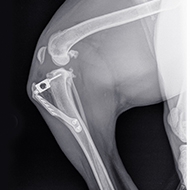A gene defect responsible for a form of PRA was discovered in Swedish vallhund dogs.
Discovery could lead to the development of new therapies
Scientists from Michigan State University and the University the University of Helsinki have found a gene defect responsible for a recently identified form of progressive retinal atrophy (PRA) in Swedish vallhund dogs. The finding could lead to the development of therapies for diseases that cause blindness both in humans and dogs.
Inherited retinal diseases are among the major causes of incurable blindness in humans as well as in dogs, where most of these conditions are classified as PRA. Because the anatomy of a dog's eye is very similar to that of a human eye, canines are instrumental to the understanding of retinal disease mechanisms and the development of new therapies for human patients.
The gene identified as a cause of PRA in the Swedish vallhund is related to a form of one of the most common incurable forms of blindness - human retinitis pigmentosa.
The discovery, a result of a decade-long project by Dr. András Komáromy at Michigan State University, and Professor Hannes Lohi and Dr. Saija Ahonen at the University of Helsinki, has now been published in Plos ONE. It is the last of three papers, each on Nordic dogs, which address blinding ocular diseases affecting both dogs and people. It is hoped that their findings will help lead to gene therapies for dogs and humans.
Professor Hannes Lohi explains: "The work to characterise these diseases in two Nordic dog breeds drew from well-established international collaborations between clinicians, geneticists, and dog breeders. This type of longstanding, multi-disciplinary collaboration certainly strengthens a team's response to the challenges of unraveling complex problems and creating innovative solutions."
The paper, A Novel Form of Progressive Retinal Atrophy in Swedish Vallhund Dogs. is published in PLoS ONE.
Image (C) TS Eriksson







 Birmingham Dogs Home has issued an urgent winter appeal as it faces more challenges over the Christmas period.
Birmingham Dogs Home has issued an urgent winter appeal as it faces more challenges over the Christmas period.
